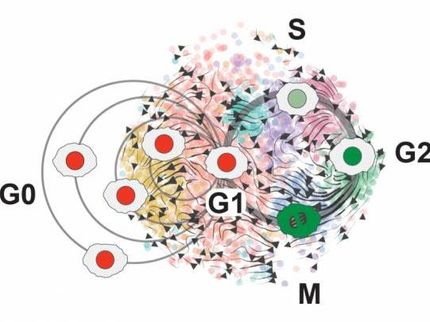Scientists Discover New Role for MicroRNAs in Stopping Tumor Cell Growth
Applied Biosystems Technology Helps to Reveal Cancer Fighting Function of Small RNAs
Advertisement
Scientists at Cold Spring Harbor Laboratory (CSHL), Howard Hughes Medical Institute (HHMI), and Applied Biosystems, an Applera Corporation business, have discovered that a family of small RNA molecules known as microRNAs (miRNAs) are components in a well-studied tumor suppressor network, the p53 pathway, that stops the growth of tumor cells in mice. This tumor suppressor capability represents a newly discovered function for miRNAs. The finding may also suggest new approaches for treating cancers. The results of the team's two-year collaboration will be published in Nature. Other co-authors were from Stony Brook University and Rosetta Inpharmatics.
MicroRNAs regulate gene expression, and have been implicated in a number of different cancers. In this study, researchers performed extensive gene expression profiling experiments that identified three miRNA genes called miR-34s as candidate tumor suppressor genes. They were then able to detect significant changes in the amount of miR-34 miRNAs in mouse cells that had been constructed both with and without copies of the p53 gene, a gene that governs cell growth, suppressing tumor formation. These findings helped them to explain the role of these miRNAs in tumor suppression. Follow-up validation research with mice by scientists at CSHL revealed the cancer fighting function of the miRNAs.
Results of this study also showed that, in mouse tumor cells that contained a functioning p53 gene, expression levels of the three miR-34 genes increased compared to levels of the miRNAs in cells without the p53 gene. The resulting miR-34 miRNAs then repressed the expression of other genes related to cell growth, which in cases of cancer, are involved in cell proliferation. The researchers suggested that one way that p53 may suppress tumor growth is by inducing the expression of miR-34 genes, which then silence expression of various cell proliferation genes.
Consistent with their finding in mice tissue samples that miR-34 expression is regulated by p53, researchers found comparatively low levels of miR-34s in human tumors and cancer cell lines, which show a high frequency of p53 deficiency. Scientists still do not fully understand what role miR-34 plays in the overall p53 tumor suppressor network. However, they believe that there is great potential for altering miR-34 expression to harness the cancer fighting function of the p53 pathway and developing these miRNAs into therapeutic agents for treatment of cancer.























































